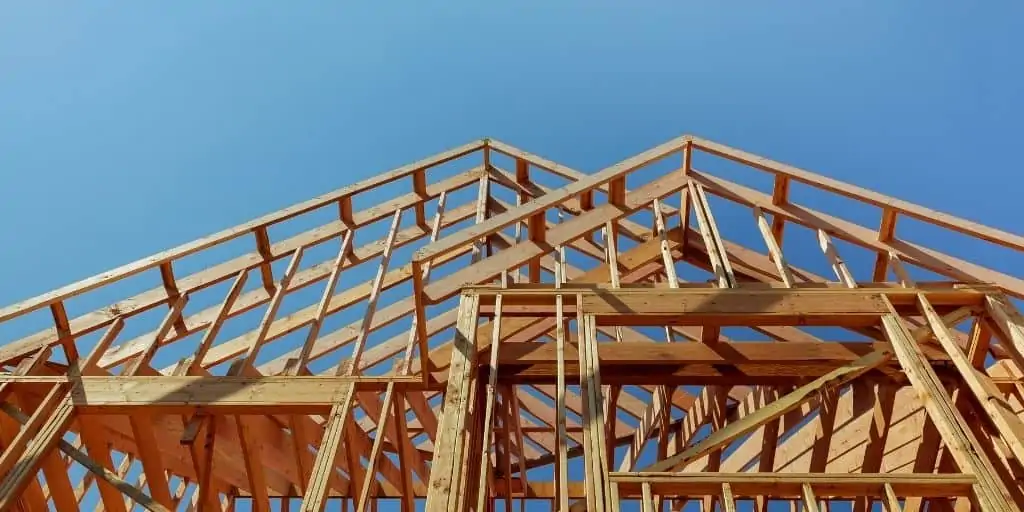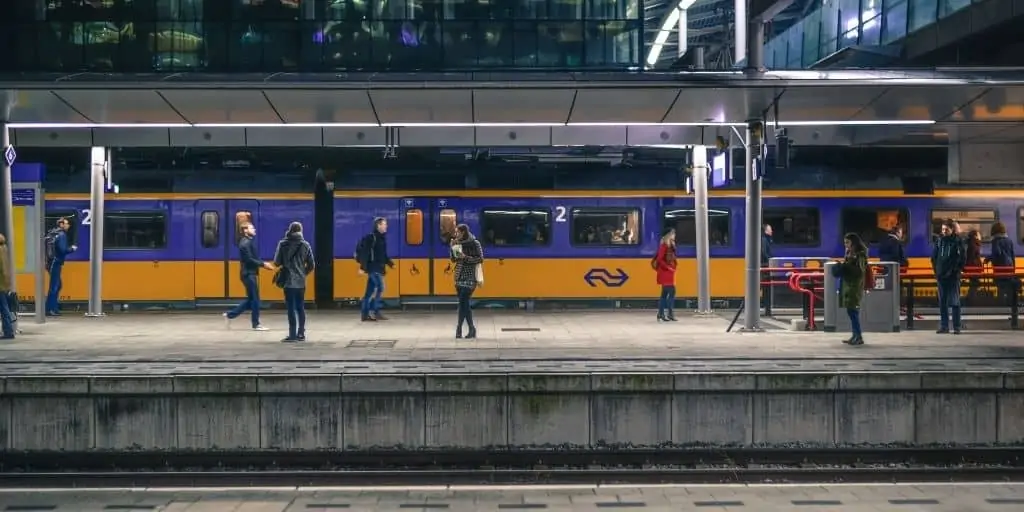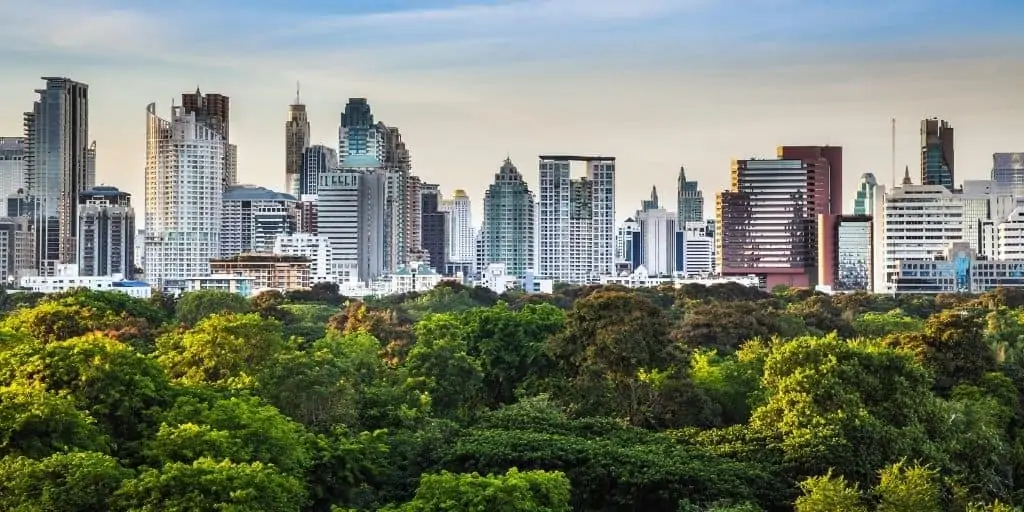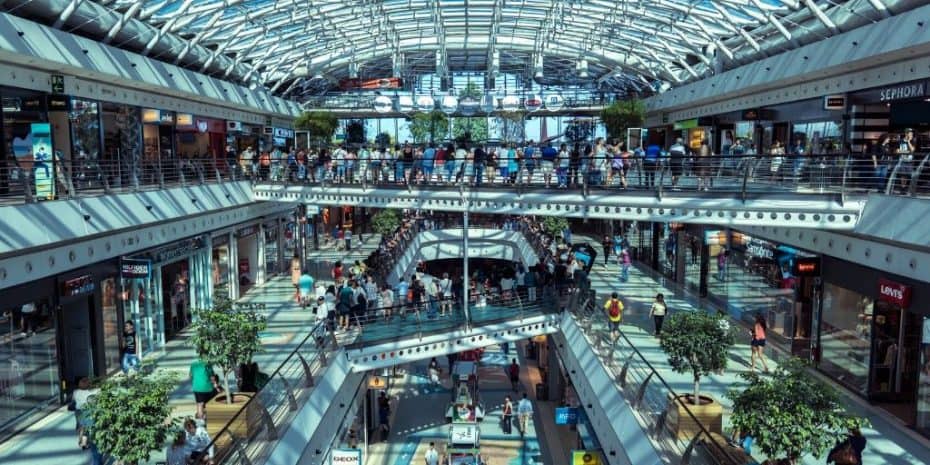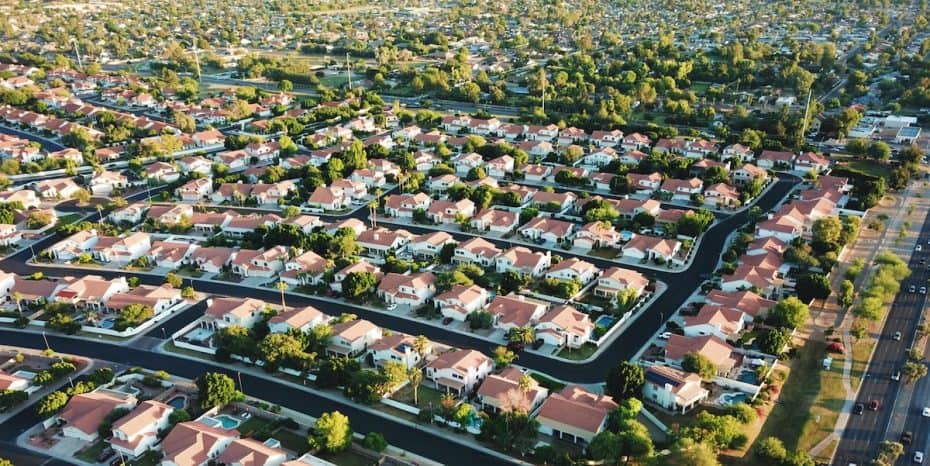What is Suburbanization?
Suburbanization in the United States
The suburbanization of America, characterized by families moving from urban centers to nearby counties, started happening after World War II. At that time, only 13% of Americans lived in the suburbs[1], but by 2010, more than half the population of the United States called the suburbs their home.
The purpose of suburbanization was to provide a means for the large influx of people moving back to the cities after World War II to have somewhere to live, ideally to own a home and a piece of land. The idea was marketed to Americans, largely by the Federal government, as “the American dream,” which consisted of owning a single-family home with a yard — the perfect setting in which to raise a family.

Levittown, early 1950s, via Flickr user markgregory.
The reason for government involvement was to stimulate the economy through home building, lending, and building the infrastructure needed to support suburban life. The freeway/highway system, for example, was developed during this time, providing a method for people to commute to the city for work and then back home again. This created a car-reliant society.
Benefits of Suburbanization
Suburbanization has some benefits and some drawbacks that affect people in different ways.
One of the key benefits is the availability of open space and less traffic to the residents throughout the city.
Suburbanization can also effectively drive down the cost of housing in both the suburbs (because people can continually look for property further and further away from town until they can find an affordable price) and as this decreases the demand for housing in the center of the city, it can also drive down the cost of inner-city housing as well.
Suburbanization can also stimulate the economy through home building, lending, and building the infrastructure needed to support suburban life. The expansion of roads and public utilities creates a great deal of economic growth while providing a means for suburban residents to commute to the city for work and then back home.
Drawbacks of Suburbanization
While suburbanization can provide some benefits, there are plenty of negative consequences as well.
When the population shifts to the outskirts of town, it adds significant new costs to public utilities when running water lines, sewer lines, roads, electricity, and other public services further and further out from the center of town. The expansion of these roads and utilities does create jobs, but it also adds significant new and ongoing costs as well.
Suburbanization also makes it more difficult to provide public transportation, which requires people to depend even more on their own cars, which also means more gas consumption and pollution.
With greater distances for people to travel to and from work and other local conveniences, public transportation becomes more difficult to provide to the public, walkability decreases as well.
As the demand and cost for housing in the city decreases with suburbanization, it also reduces property values, along with the city’s tax revenue, which can result in fiscal deficits and a lack of funding to provide city services.
The Environmental Impact of Suburbanization
When there is growth in suburbanization there is typically a negative impact on the environment.
Suburbanization is linked to increased land use, fuel consumption, vehicle mileage, and overall energy consumption. Suburbanization has also caused an increase in the release of greenhouse gases and an increase in the usage of water and oil.
Suburbanization is usually seen through the lens of residential developments, but it affects the industrial world as well. While industrial developments used to be situated in the urban core of many cities, many companies are looking to build facilities and plants in less populated areas to take advantage of the availability of parking space and newer buildings, and also to provide opportunities for employees to work in less congested areas.
The Ubiquitous Mall
The shopping mall was a development unique to the suburbs. The first indoor mall in America was the Southdale Center, built in 1956[2], and located in a Minneapolis suburb. Shopping malls, although privately owned and constructed, replaced downtown shopping districts.
At their peak, there were more than 1,200 malls in America[3], but as of 2020, more than 300 malls are likely to close.
The Racial Element of Suburbanization
During the early years of suburbanization, up until the Fair Housing Act of 1968[4] was enacted, African-Americans, Asians, and Latinos were kept out of the suburbs. The FHA actually required racial segregation[5] in the early days, a practice known as institutional discrimination, or “redlining.”
The Fair Housing Act of 1968 prohibited discrimination based on race, color, religion, sex, and national origin, but racial segregation persisted for decades in the suburbs, despite the Fair Housing Act.
The Suburbanization Boom
During the 1980s, “suburban sprawl,” characterized by single-family homes that replaced either vacant land or farmland with little to no regional planning, was happening on a large scale. More than half the households in America were living in the suburbs by 2010.
This was made possible in large part by the rise of national builders during this time, such as Pulte, D.R. Horton, and Lennar, who were building tens of thousands of suburban homes a year.
Shifting Suburbanization Demographics
Suburbanization began as a place for married couples to raise a family, but by 2010, 75% of households were not composed of that sort of family[1].
Instead, suburbia represented a whole slew of family types: singles, elderly people, divorced people with shared custody, married couples with no children, and households shared by relatives or friends.
The Aftereffects of Suburbanization
Although the idea of suburbanization seemed idyllic when first introduced to America, many negative aftereffects of the model have occurred. The creation of suburbs drained resources from urban centers, encouraged segregation, made commuting in cars necessary (which led to wasted hours in traffic), and eventually led to isolation from the community as a whole.
To help solve the problems created by suburbanization, “Smart Growth[6]” initiatives have become popular. These call for mixed-use developments that encourage walkability and community involvement in live-work-play areas.
Takeaways
Suburbanization is a displacement of population from a city center onto its surrounding areas, called the suburbs. The federal government encouraged homeowners to move to the suburbs after World War II, by labeling the signature suburban home (a single-family house with a yard, ideal to raise a new family in) “the American Dream.” As a result, the economy picked up when the housing market boomed due to construction and lending. Over 60 years after the move to suburbanization occurred, over half of all Americans live in a suburb.
This decentralization offered a few advantages. For one, it drove down the cost of housing in both the suburbs and the city, and it effectively decongested traffic in the latter. Second, the construction of public infrastructure and malls, which replaced downtown shopping strips, also created jobs, which, in turn, boosted the economy. However, suburbanization created new problems or exacerbated new ones, such as “redlining,” a form of racial segregation (which has since been abolished). It also created a car-reliant economy to commute to and from work, reducing the walkability of cities while increasing pollution and the consumption of oil, water, and land. Some initiatives have since sprung up to address these problems while trying to retain the decentralized nature of suburban living.
Sources
- Nicolaides, B., Wiese, A. (2017.) Suburbanization in the United States after 1945. Retrieved from https://doi.org/10.1093/acrefore/9780199329175.013.64
- Southdale Center. (n.d.) About Southdale Center. Retrieved from https://www.simon.com/mall/southdale-center/about
- World Finance. (n.d.) The rise and fall of the US mall. Retrieved from
https://www.worldfinance.com/markets/the-rise-and-fall-of-the-us-mall - Britannica. (n.d.) Fair Housing Act. Retrieved from https://www.britannica.com/topic/Fair-Housing-Act
- The Fair Housing Center of Greater Boston. (n.d.) 1934–1968: FHA Mortgage Insurance Requirements Utilize Redlining. Retrieved from https://www.bostonfairhousing.org/timeline/1934-1968-FHA-Redlining.html
- Smart Growth America. (n.d.) What is smart growth? Retrieved from https://smartgrowthamerica.org/our-vision/what-is-smart-growth/





